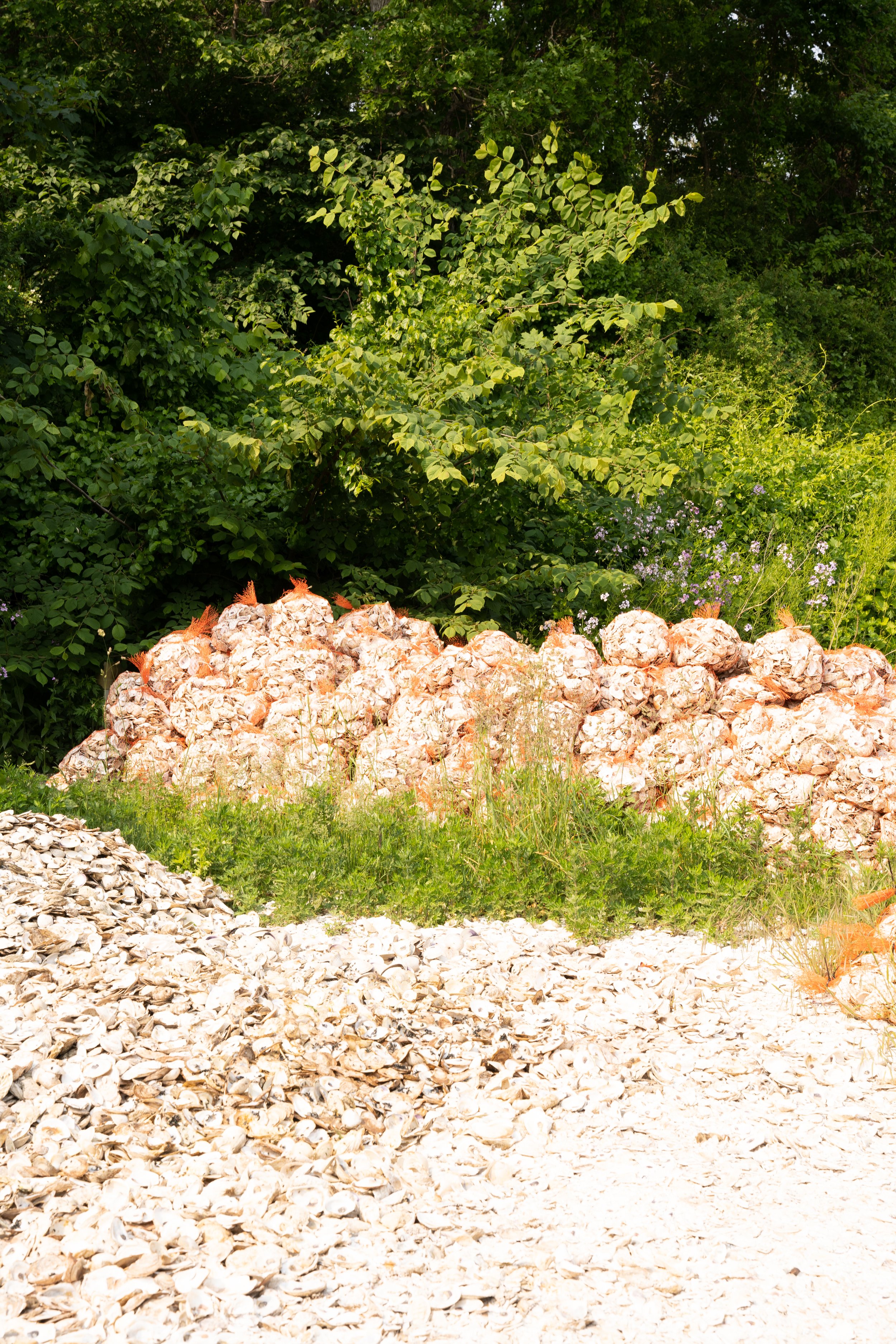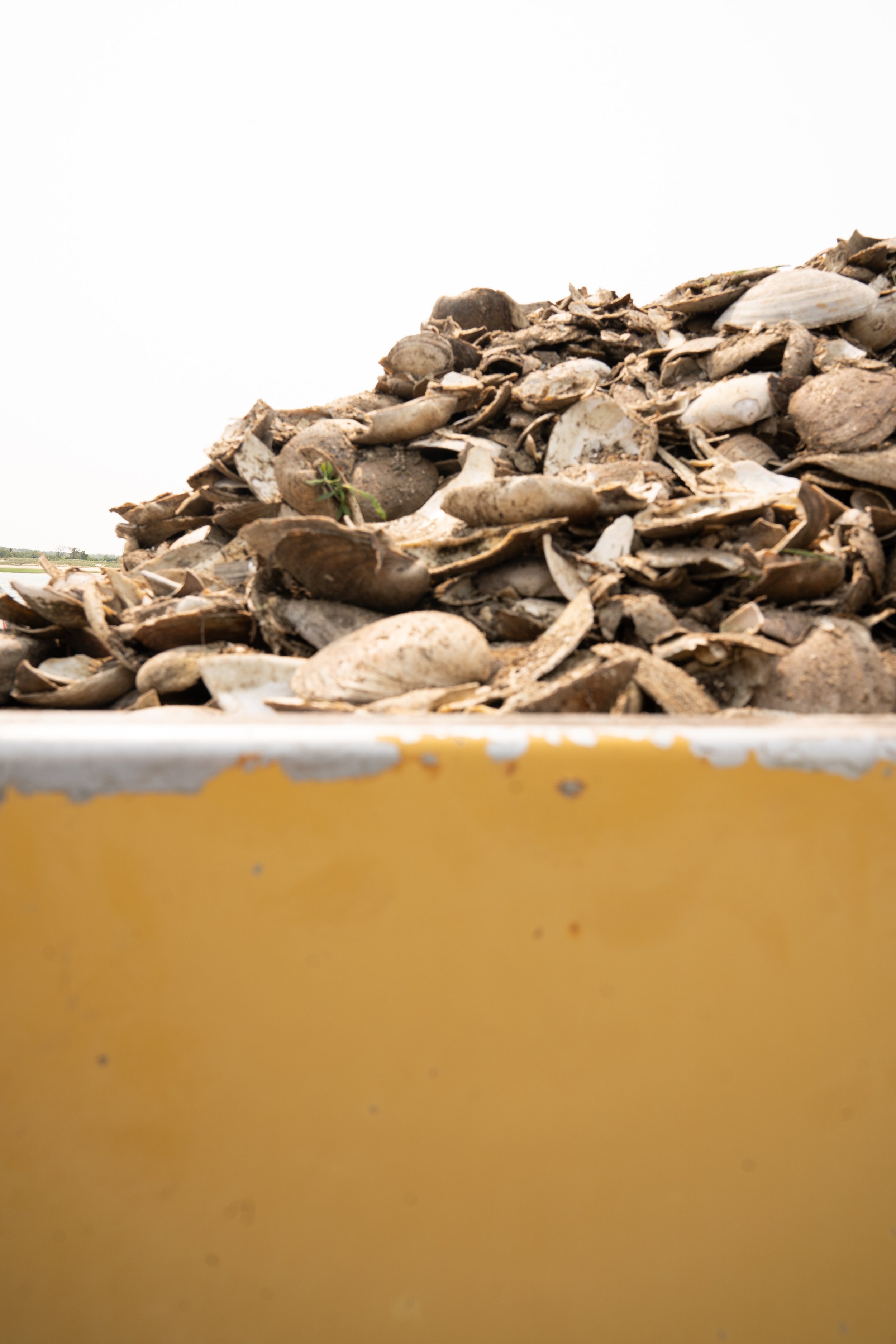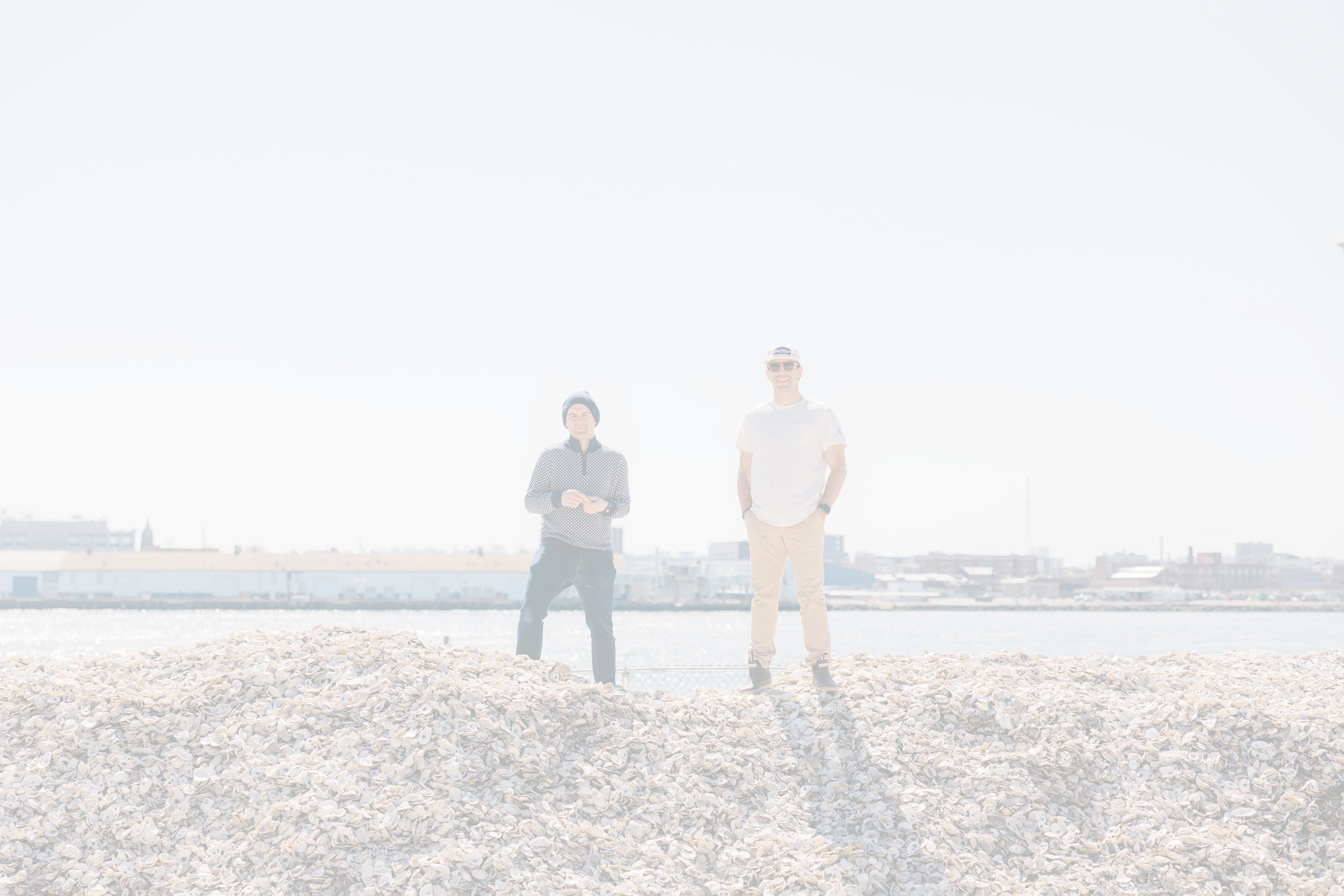Laying Shell With Johnny Clam & The Town Of Wellfleet

Serving as the bedrock of the entire Massachusetts coastline, discarded shell once provided structure on which inshore marine habitats could naturally grow and thrive. Due to many large scale factors including overfishing, rising water temperatures, and expansion of development the quality of underwater structure diminished greatly during the 19th and 20th centuries along the entire east coast leading to a drop in the amount of natural oyster reefs found along the Atlantic Ocean.
We recently joined Erika, Program Director for the Cape Cod Shell Recycling Program managed by the Massachusetts Oyster Project, for a day on the Cape collecting shell, discussing the entire lifecycle of discarded shell, and getting on the water to put shell back in the water with Johnny Clam and Nancy, Wellfleet Town Shellfish Constables.
Over the past decade, there’s been a major uprising from communities in coastal towns nationwide that have recognized the benefits that oysters and other filter feeders have on the improved quality of water in their harbors. For most of the 20th century a dozen oysters could be consumed by locals and tourists alike, often ending up in landfills contributing to global waste and the toxic end game that comes with it. Things began to change after learning that discarded shell is the very ingredient required for more natural oysters and can help shellfish to flourish, multiply, and regulate water conditions among inshore marshes and bays for generations to come.
We’ve been proud to support the Cape Cod Shell Recycling program since its inception. What started as 8 local restaurants discarding their shell into separate buckets vs. the trash has grown to 22 contributing restaurants, almost 40,000 lbs of shell collected last year alone, and a sense of pride from community members excited to have a positive impact their surrounding natural environment.
Though these programs are becoming more prevalent, there is a large scale challenge to logistically collecting shell. According to regulations, it must be stored for up to a year before it can go back into the water so that any bacterias or pathogens are naturally eliminated. Once the shell has sat and is ready to go back into the water it is called “cultch” and will serve as bedrock for the growth of all-new natural oyster reefs.
Where can 40,000 lbs of smelly shell sit for an entire year? Fortunately, the town of Wellfleet has reserved a portion of their transfer station and in exchange for storage, the Mass. Oyster Project donates the shell back to the town where it is eventually layed back into the harbor where natural shellfish populations can reproduce and grow in Wellfleet Harbor.
We started the day collecting shell at Mac’s Shack, a classic outdoor-indoor Cape Cod vibe paired with some of the best sushi, cocktails, and local oysters money can buy. One of the first restaurants to partner with the Mass. Oyster Project, Mac will shuck over 1,500 oysters on a good day and he believes they’ve got a responsibility to rebuild reefs, maintain high water quality, and keep the supply of good, clean oysters coming.
Next, we made a quick stop at the Wellfleet town transfer station where a mix of shell was being stored and would be released into the harbor this June. This is the time of year when water temperatures rise and the Shellfish Constables of Wellfleet get to work laying all kinds of recycled shell on the bottom of their harbor to foster new growth of natural oyster reef for the 2023 season.
Meet Johnny Clam, Wellfleet Town Shellfish Constable, steward for the historic harbor, and one of the most knowledgable people we’ve met on the impact of filter feeders on their inshore marine habitats. We were lucky to join him and Nancy for a day on the water as they put out a large amount of discarded shell from local surf clams.
Johnny and Nancy are responsible for walking the bottom of the harbor at low tide to make sure they don’t lay cultch over existing live shellfish, loading up dump trucks full of shell, getting it all onto a barge, loaded into a floating dumpster that’s been rigged with a conveyor belt, and braving the elements to make sure cultch arrives at the correct final destination before being dumped into the harbor.
It was an incredibly unique experience joining the Shellfish Constables, talking to them about the health of their harbor, and all the natural shellfish populations in the area. Described as “a modern miracle” the way all the elements of wind, tide, and temperatures have to line up for the entire process to be successful, Johnny Clam is quick to thank the consumer. He believes without their help and love for shellfish such as oysters, this kind of program would not exist.
We’ve got to thank everyone involved in the entire shell recycling process for their time, dedication, and stewardship of such a cool circular economy. It’s a true community effort in a place like Wellfleet and a shining example of how local business, their customers, and officials can work together to have a positive impact on their environment - A place where so many people depend on their waters and, in a small way, their waters are beginning to depend on them.
























